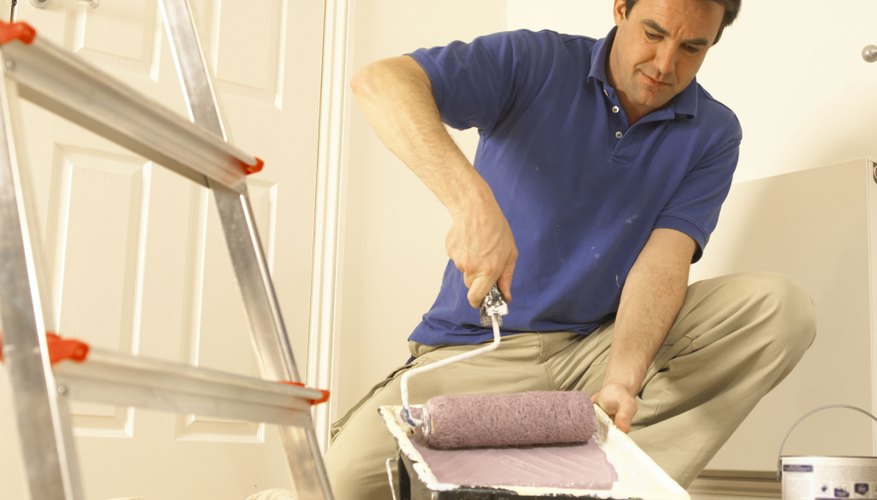Adding a tint to white emulsion subtly changes the look of plain white walls and the feel of a room. Greens, lilacs and blues add a cool feel while yellows, reds or oranges add a warm feel. Paint manufacturers are well aware of this, and many sell a range of off-white colours with names such as “sand”, “apple” or “duck egg”. Such colours often cost more than plain white, and you might not get quite the hue you want. Tinting emulsion yourself is simple enough, though, and with a bit of experimentation you can get exactly the shade you want.
- Adding a tint to white emulsion subtly changes the look of plain white walls and the feel of a room.
- Such colours often cost more than plain white, and you might not get quite the hue you want.
Obtain enough cheap white emulsion to cover your walls, with a bit extra. Also acquire sample tubs of colours in the spectrum you want your tint to be. For example, if you want a warm, sandy tint, collect yellow, red, grey and brown samples.
Transfer a small amount of the white emulsion to a plastic tub for a test. Check that the tint you produce in the paint dries to the shade you want.
- Transfer a small amount of the white emulsion to a plastic tub for a test.
Spoon a small amount of the base colour of the tint into the tub. For a sandy tint, the base colour is yellow. Add more until you get the desired depth of colour.
Spoon in tiny amounts of other colours to alter the base. A sandy tint also includes brown and sometimes a touch of red or grey. Stop when you think you’ve achieved exactly the right shade.
Paint a test area, preferably somewhere that gets both natural and artificial light. Put the lid on the small plastic tub to keep the rest of the paint fresh. Allow the painted area to dry. Examine the result. If the results are what you want, tint the rest of the emulsion. If not, repeat until you get the desired result.
Open the test tub as a reference and add colours to the main tub of emulsion until the two match perfectly. Seal and save the test for future reference if you want to paint other rooms the same shade later.
- Paint a test area, preferably somewhere that gets both natural and artificial light.
- Seal and save the test for future reference if you want to paint other rooms the same shade later.
TIP
If possible, use samples from the same manufacturer that produces the white. Otherwise, check the test area carefully to ensure the finish is uniform.
Emulsion dyes are available, although they can be costly.
Emulsion paints are based on water, and it is possible to tint them with other water-based paints. Any paint for which you rinse the brushes in water, rather than a solvent, could work. Children’s poster paints, for example, are inexpensive, non-toxic and often mix well with white emulsion. Proceed as for the sample paints and check that the consistency works to create a uniform finish when dry.
